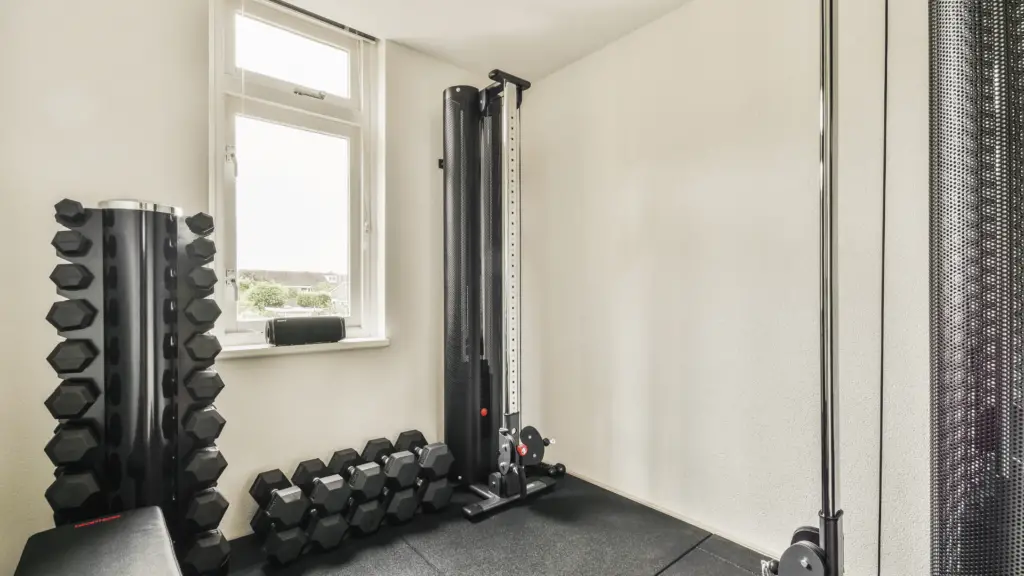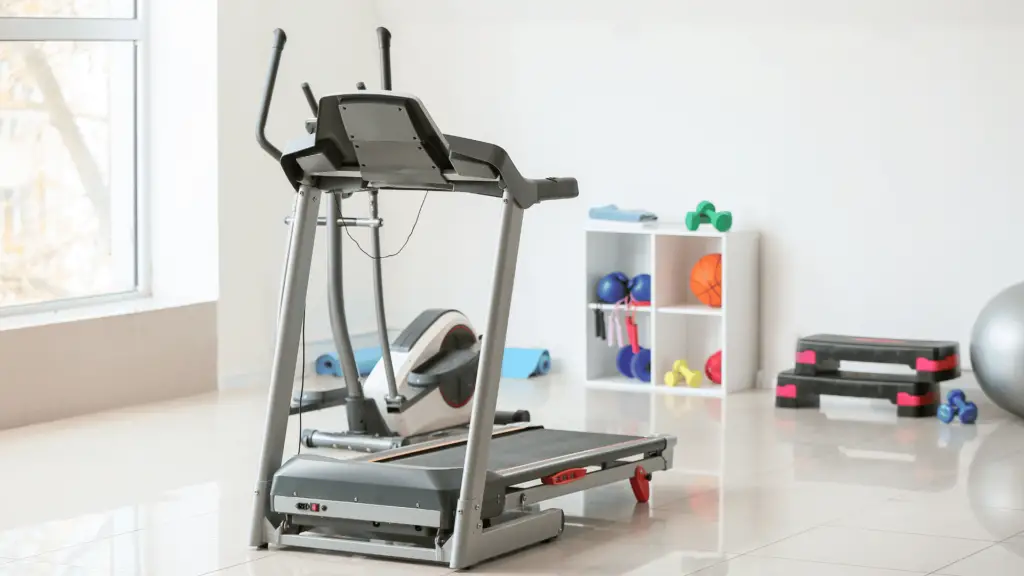So, you’re thinking of purchasing a set of fitness equipment. While it’s a great idea to boost your workout routine, buying fitness equipment can get confusing.
Using equipment for something other than their intended purpose could speed up wear and tear.
We’re going to settle the debate on residential vs. commercial gym equipment. We’ll look at the right machines to use for both home and apartment complexes. Likewise, you’ll learn some of their key differences such as length of use, benefits, etc.
A Quick Look at the Difference Between Residential and Commercial Fitness Equipment
One of the main differences between the two is their intended purpose. Residential-grade exercise machines are made for light to moderate use. On the contrary, their commercial counterparts are designed for a more demanding application.
Commercial equipment’s materials and other components have a higher quality than the residential.
For that reason, it costs more to produce commercial equipment, which justifies its more expensive price tag than residential machines.
When it comes to resale value, you can resell both grades for about 50% to 70% of their retail value. However, expect to get more on equipment that’s high in demand such as treadmills and exercise bikes.
What Grade of Gym Equipment Is Right for an Apartment Complex?

If you’re thinking of adding a gym to your apartment business but aren’t sure what equipment to have, then this section is for you.
You see, a lot of people spend hundreds or even thousands of dollars on gym memberships.
Just like most rental buildings, having this amenity will add value to your apartment complex. A gym will encourage your renters to stick around, and you could also use it to invite new occupants.
However, to prevent you from getting a lot of headaches on maintenance and repairs, we suggest that you get a set of commercial-grade equipment.
The long-lasting ability of these fitness machines will accommodate several users.
Qualities of Commercial Gym Equipment
As mentioned earlier, commercial gym equipment consists of high-grade materials. This means that the steels used to produce them have a certain thickness and level of quality. The hard deck underneath the belt of a treadmill is often much stronger in a commercial piece of equipment.
Moreover, the paddings, paint, and ergonomics all have the same top-level characteristics.
On top of that, commercial equipment possesses advanced features that your renters will appreciate. While it’s true that these machines require a huge amount of upfront investment, their quality/price ratio will reward you in the long run.
However, using the right equipment grade will mean nothing when you don’t take into account the number of users. Meaning you have to be mindful of how many units your rental property has and how many hours they will be used per day.
It’ll help you know the type of machines and how many of them you’ll need in your gym.
What Grade of Gym Equipment Is Right for Home Use?
Today, many homeowners invest in gym equipment. Some people simply don’t have the time to travel from home to a commercial gym.
They also enjoy doing their fitness routine in a place with fewer distractions. Besides that, they can use their home gym anytime – it’s always open!
So, if you’re looking at buying machines for personal use, we recommend that you get a set of residential-grade gym equipment.
They are less expensive than their commercial-grade equivalents. Despite their budget-friendly price, they could last for extended periods as long as you use them moderately.
Affiliate Disclosure: We may earn a commission if you click a link on our site and make a purchase. For more info, see our disclaimer.
Things to Consider When Buying Home Gym Equipment

Before pressing the buy button, it’s best to consider a few things when buying residential-grade gym equipment.
The first on the list is the equipment’s versatility. Buying something that you can use for various purposes saves money.
For example, a resistance band is a handheld piece that helps develop muscle tone, improves balance and stability, and increases strength.
You should also pay attention to how much space you have. This will help you determine the number of motorized pieces of equipment to buy and their respective sizes. It is also a safety point. Give yourself enough space to move around.
You want to ensure that you have enough space for activities such as push-ups and sit-ups.
Lastly, you should determine your budget and what you want to achieve using this equipment.
Buying a set of cardio equipment could be a waste of your hard-earned money if your goal is to build your muscles. Remember, you can always add more equipment later as your goals change.
So, I’m going to ask you to think backwards here. Figure out your goals, then write several workouts for it (or have a personal trainer help you), then buy fitness equipment. I guarantee that you’ll use it more when you structure it around your own goals and purposes.
How Long Would a Residential Grade Treadmill Last in an Actual Gym?
Most manufacturers claim that a residential-grade treadmill could last between 7 to 10 years.
That’s if you’re going to use it exclusively at home. You see, a home treadmill isn’t designed to withstand heavy use.
Exactly how long it’ll last depends on the number of daily users your gym has. It also banks on how many treadmills you have in the facility. Using them at intervals helps them last a bit longer.
But one thing’s for sure, using this machine in a busy commercial fitness center will significantly reduce its supposed 10-year lifespan. It can quickly become a liability when things start to break, so keep that in mind as well.
How to Increase Your Treadmill’s Lifespan
First, make sure that you wipe and dry the treadmill with a clean cloth every after use to get rid of the grease and sweat the last user might have transferred from their hands to the handlebars and buttons.
Additionally, check the machine’s interior and remove hair, dust, or anything that isn’t supposed to be there. A clogged cooling system for a motor is a recipe for disaster.
Lastly, don’t forget to lubricate your machine. There are plenty of treadmill lubricants to choose from. We suggest that you try the Treadmill Belt Lubricant by Impreza or the Noosa Life Belt Lubricant.
Weight Limits of Residential Exercise Equipment
Knowing the weight limit of your exercise equipment plays a vital role in its preservation.
Loading it beyond its weight capacity could burn out the motor fast. Too much weight could also bend the feet and/or break the deck, frame, and joints of the machine.
Most residential exercise machines have a weight capacity of between 200 to 300 pounds. However, commercial and other high-end home equipment can carry up to a maximum of 400 pounds.
As an added note, observing your fitness machine’s limitations also prevents voiding its warranty. Remember that manufacturers honor this guarantee as long as you follow the product’s recommended use.
What Is in Between Residential and Commercial-Grade Gym Equipment?
If both residential and commercial grade equipment still doesn’t meet your needs, then perhaps what you’re looking for is something that’s in between those two.
Known as light commercial-grade equipment, this category of exercise equipment is built and designed for regular use in a home gym setup. It can also be used in small scale-apartments, corporate offices, churches, police headquarters, etc.
The duration of use per day for residential and commercial equipment is two hours and six hours respectively. Alternatively, you can use light commercial fitness machines for no more than three hours daily. These durations obviously vary by brand, but in my personal experience, I would go with a light commercial piece even if it is for my home since they are sturdier and more reliable.
Just like weight capacity, observing the equipment’s daily allowable hours of use prevents early wear and tear.
Gym Equipment Ideas for Both Apartment Complex and Home Use

The most common equipment that most gyms have is the treadmill. Fitness enthusiasts use this machine for cardiovascular exercises like walking and running.
Consider also having an elliptical trainer. It helps you simulate stair climbing as well as running and walking. Unlike climbing actual stairs, an elliptical trainer delivers less pressure to your joints.
You might want to have a stationary bike in your gym. Apart from its health benefits, this piece of equipment eliminates the risks associated with outdoor biking, like exposing yourself to air pollution or collision with other vehicles.
A rowing machine is likewise a good addition. It allows you to have a full-body workout. It develops your quadriceps, calves, and abdominal muscles.
Other than motorized equipment, you might want to add some free weights to your gym. This includes dumbbells, kettlebells, barbells, and medicine balls.
They’re great options for bodybuilding, strength training, and cardiovascular exercises.
Where to Shop for Your Preferred Grade of Gym Equipment
For residential-grade fitness machines, you might want to check FitnessFactory.com. Its wide range of multi-station equipment, functional trainers, and smith machines could all fit nicely in compact spaces.
You may contact them at (800) 383-9300 or visit their branches in Illinois.
If you prefer commercial-grade equipment, the Fitness Outlet might be able to help you. It focuses on providing equipment to motels, hotels, and multi-housing complexes. You may call this distributor’s office at 1 866 883 4863.
However, if what you’re after is a set of light commercial-grade equipment, try contacting TuffStuff Fitness. This distributor has a bunch of cool options for this particular grade.
Final Thoughts
Based on what you’ve read above, you can enjoy the full potential of your fitness machines if you use them according to their designed purpose.
In other words, using a set of equipment in an apartment complex intended for home use could compromise its lifespan. On the contrary, buying commercial-grade exercise machines for residential use will only make you spend more.
You also learned that light commercial-grade gym equipment has something to offer that its two counterparts don’t. It’s more durable than residential exercise machines but less expensive than commercial ones, giving you the best of both worlds.
For more information check out my article on Gym Design.


